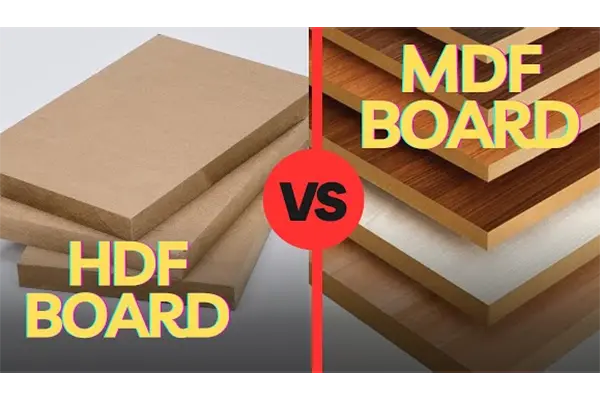MDF and HDF are two popular acronyms you’ll encounter in the world of woodworking and DIY projects. Both are wood derivative materials, offering smooth surfaces and ease of use. But when it comes to choosing between MDF and HDF, understanding their key differences is crucial for project success. Let’s delve into the world of these fiberboards to determine which one reigns supreme for your specific needs.
MDF (Medium-Density Fiberboard): The All-Rounder
MDF is a versatile material formed by breaking down wood fibers, combining them with resin, and pressing them into sheets. Its popularity stems from several advantages:
- Smooth Surface: MDF boasts an incredibly smooth finish, ideal for painting and creating clean lines in furniture and cabinetry.
- Workability: It’s relatively easy to cut, drill, and shape, making it a favorite among DIY enthusiasts and professional woodworkers alike.
- Affordability: Compared to solid wood, MDF offers a budget-friendly option for various projects.
However, MDF has some limitations to consider:
- Moisture Resistance: Regular MDF absorbs moisture readily, making it unsuitable for humid environments like bathrooms or kitchens.
- Weight Bearing: While strong for its weight, MDF can sag or crack under excessive loads. Solid wood is a better choice for heavy-duty applications.
HDF (High-Density Fiberboard): The Strength King
HDF is the denser cousin of MDF. Made through a similar process, HDF utilizes even finer wood fibers and more resin, resulting in a sturdier board:
- Superior Strength: HDF boasts exceptional density and strength, making it ideal for applications requiring high load resistance, such as flooring underlayment or heavy-duty furniture components.
- Moisture Resistance: HDF offers improved moisture resistance compared to MDF. While not entirely waterproof, it can withstand moderate humidity levels better.
However, there are some downsides to consider with HDF:
- Workability: Due to its increased density, HDF can be more challenging to cut and drill compared to MDF. Special drill bits and blades might be necessary.
- Cost: HDF generally comes at a slightly higher price point than MDF.
So, Which One Wins the Battle?
The answer depends on your project’s specific needs:
- Choose MDF if: You need a smooth, affordable material for furniture making, cabinetry, painted projects, or applications where weight isn’t a major concern.
- Choose HDF if: Strength and moisture resistance are paramount. This includes applications like flooring underlayment, heavy-duty furniture components, or projects in moderately humid environments like basements.

The Final Cut: Making an Informed Decision
MDF and HDF are both valuable materials in the woodworker’s arsenal. By understanding their strengths and weaknesses, you can make an informed decision about which board will best suit your project requirements. Remember, consider factors like budget, project application, and desired aesthetics when making your choice. With the right material in hand, you’ll be well on your way to crafting a project that’s both beautiful and functional.
Post time: 04-24-2024











